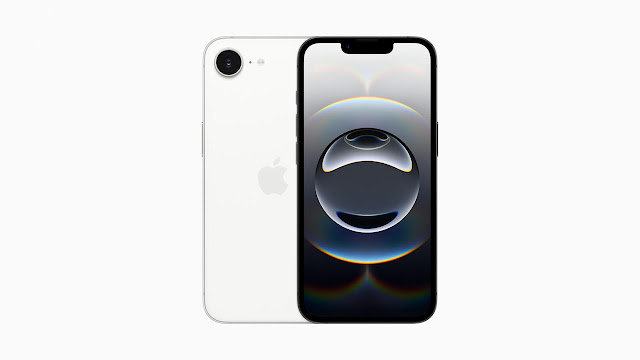iPhone 16e Review: Embracing Change with a Few Compromises
This week, reviewing the iPhone 16e feels like a time warp. It's like visiting my younger self while being forced to experience a more outdated version of the future, especially after months of using the iPhone 16 Pro. The iPhone 16e presents a chance to embrace change — something that comes with getting any new phone — but not all changes are for the better. At its starting price of $599, the absence of some key features, which Apple seems to have skipped to make room for its Apple Intelligence at a lower cost, becomes a bit more noticeable.
Apple had to make compromises for the iPhone 16e to offer a more budget-friendly model, but what stands out is the choice to exclude a second camera and MagSafe. Calling the iPhone 16e's 48-megapixel camera a "2-in-1 camera system" is an obvious hint that two sensors are something consumers want. Yet, here we are.
Powered by the A18 chip and the new C1 modem (Apple’s first in-house modem), the iPhone 16e offers smooth performance, but you’ll need to closely examine the differences between it and other iPhones. What wireless charging speeds matter to you? Do you care about camera features?
I spent about a week with the iPhone 16e, and while the omission of MagSafe and Dynamic Island didn't bother me too much, the limitations of its camera were more noticeable. However, what it does offer is strong performance, a sleek design, solid battery life, and most importantly, a more affordable way into the Apple ecosystem.
Pros:
- Solid performance
- Long battery life
- Clean, durable design
- Bright, vibrant screen
Cons:
- Only one rear camera, limiting versatility
- More expensive than the previous iPhone SE
- No MagSafe support
Design and Display
Apple clearly wasn’t going to release an iPhone SE in 2025 with an outdated design, and the iPhone 16e, like its other 16 series counterparts, follows a modern aesthetic. The 16e resembles the iPhone 14 from the front, thanks to thicker bezels and a notch, but this is more of an issue for those used to the latest design trends. That said, its 6.1-inch OLED display feels modern and vibrant compared to the 4.7-inch screen on the SE.
Though the display isn’t as bright as the iPhone 16 (which reaches higher brightness levels), the 16e still delivers solid performance for everyday use, making it a good fit for media consumption. However, it’s worth noting that many Android competitors at this price point offer smoother refresh rates, as the iPhone 16e’s display is capped at 60Hz.
The iPhone 16e retains the old notch, unlike the pill-shaped Dynamic Island found in the 16 and 16 Pro models. While this might not be an issue for first-time iPhone users, it was a bit of a step back for me, especially when I missed certain features like quick controls in the notch.
Camera Experience and Performance
The iPhone 16e’s single rear camera is an area where the compromises are most evident. Though it shares a 48MP sensor with the iPhone 16, it lacks an ultrawide lens, limiting versatility. I quickly found myself needing more room to capture wide shots in tight spaces, a feature that the iPhone 16's second camera solves effortlessly.
Portrait mode also has its drawbacks. Unlike more advanced models, it only works on faces, restricting its use for objects or non-human subjects. The lack of a dual-camera system means you miss out on features like Photographic Styles, Sensor-shift OIS, and advanced modes like Spatial and Cinematic video. While the iPhone 16e still takes decent photos, especially in well-lit conditions, it doesn’t quite match up to its pricier counterparts in flexibility or performance.
Performance, Apple C1 Modem, and Battery Life
Despite the camera limitations, the iPhone 16e excels in everyday performance. The A18 chip offers smooth operation, and I didn’t experience slowdowns even in games like Vampire Survivor. While it may not handle intense titles like Call of Duty: Warzone Mobile as smoothly as the iPhone 16 Pro, it’s still more than capable for most users.
The iPhone 16e's battery life is impressive, lasting well over 24 hours on a single charge with moderate use. It’s also equipped with the new C1 modem, which significantly improves network performance, especially for those on AT&T eSIMs.
How Does It Compare to Other iPhones?
When comparing the 16e to the iPhone 16 and iPhone SE, there are noticeable differences. The 16e lacks MagSafe, so if you rely on magnetic accessories, this might be a deal-breaker. It also supports slower wireless charging speeds (7.5W) compared to the 16 (25W), and it uses Wi-Fi 6 rather than the newer Wi-Fi 7 standard. Additionally, it doesn’t support ultra-wideband (UWB), limiting features like more precise Find My tracking.
Despite these compromises, the iPhone 16e still offers a much more modern experience than the iPhone SE, with features like USB-C charging, a sharper camera, and Apple Intelligence integration.
Wrap-Up
The iPhone 16e makes a solid argument for those looking for an entry-level iPhone. While it may lack some of the bells and whistles of its more expensive siblings, it delivers solid performance, an impressive display, and a more affordable entry point into the Apple ecosystem. However, if you're someone who values advanced photography or faster charging speeds, you might find the trade-offs a bit too much to handle.
In the end, the iPhone 16e is an excellent option for those who just need a reliable, well-performing device without all the premium features. But if you want a bit more, the iPhone 16 offers plenty of extra value for just a bit more money.









.jpeg)


.jpeg)
0 Comments